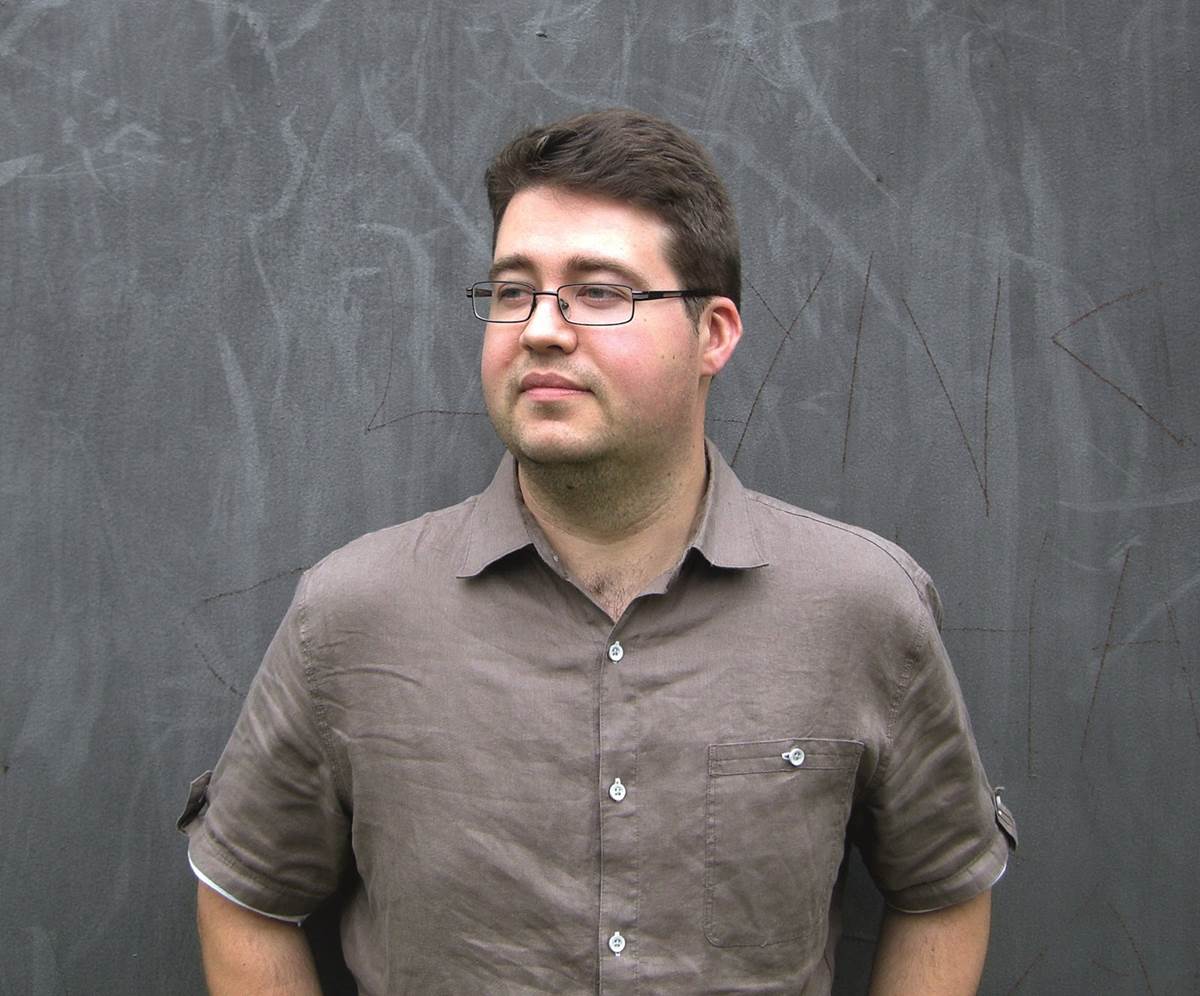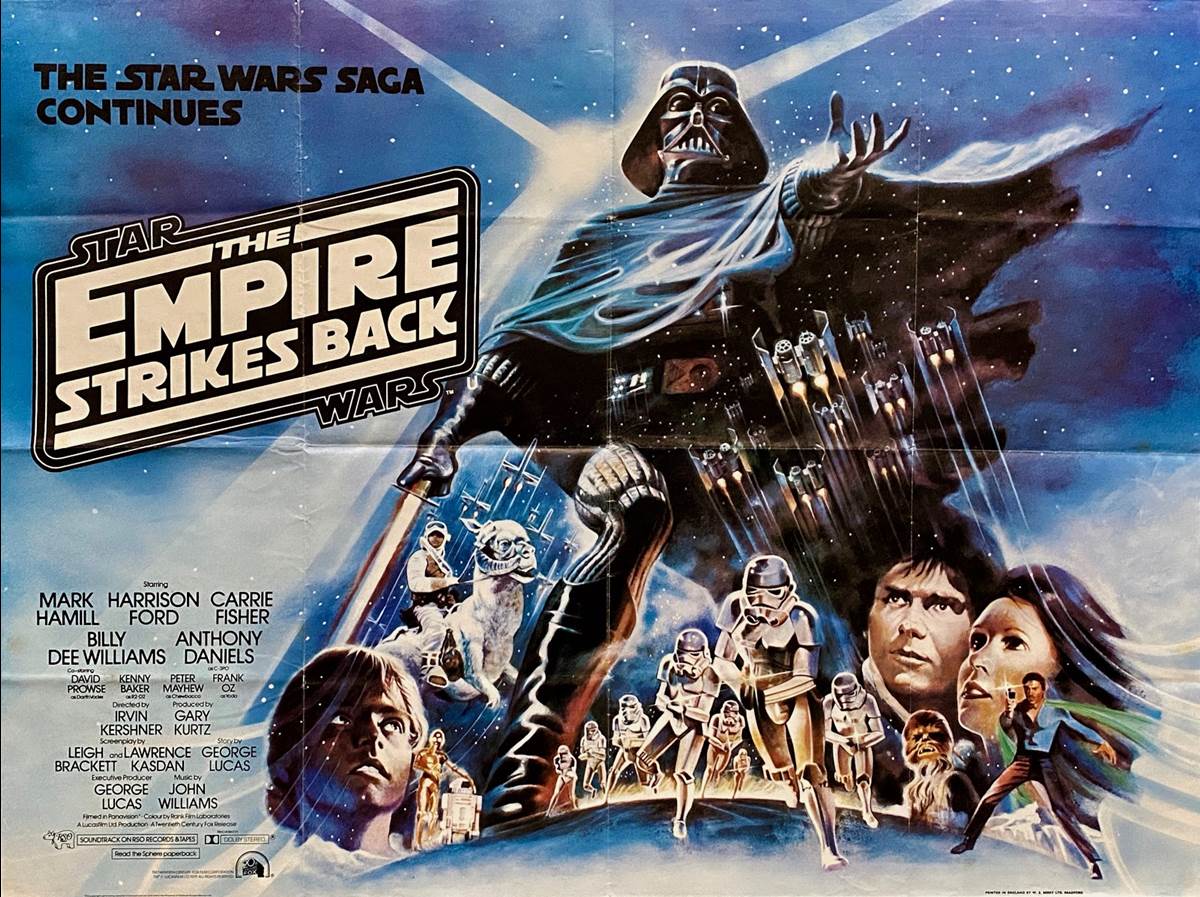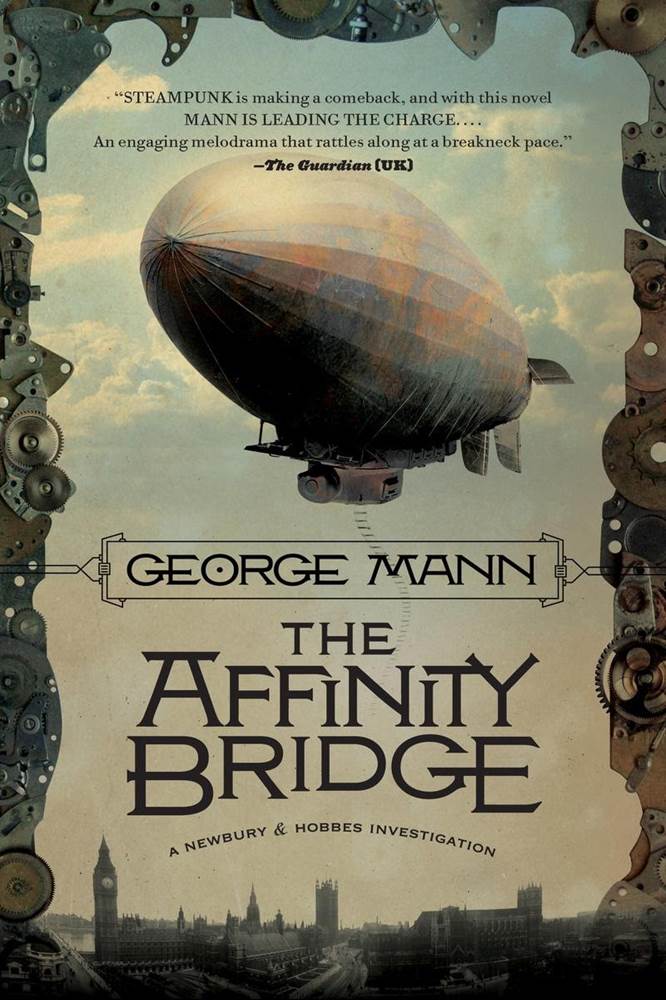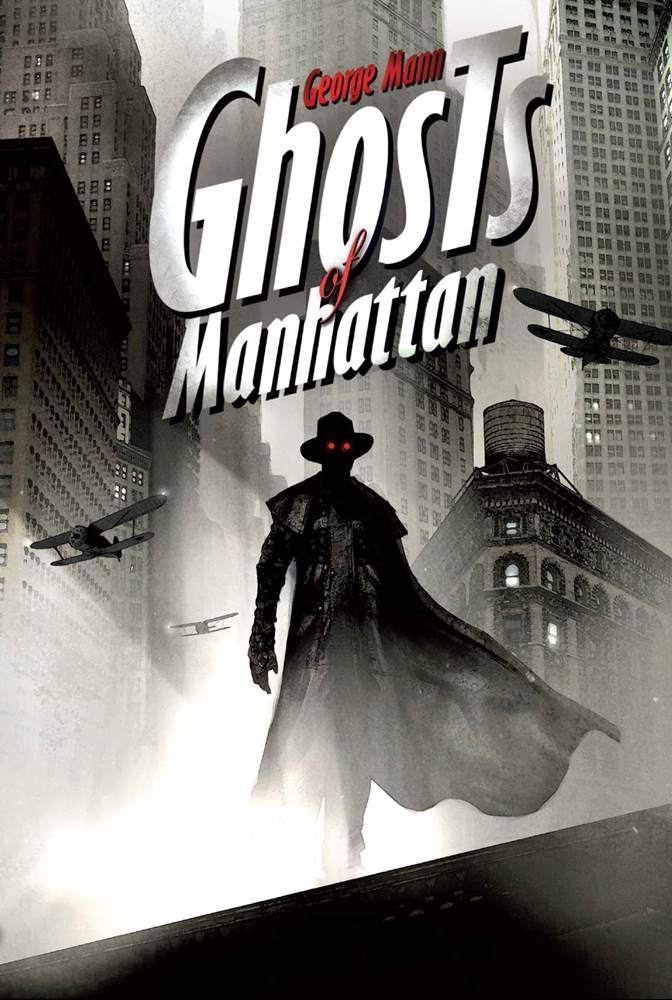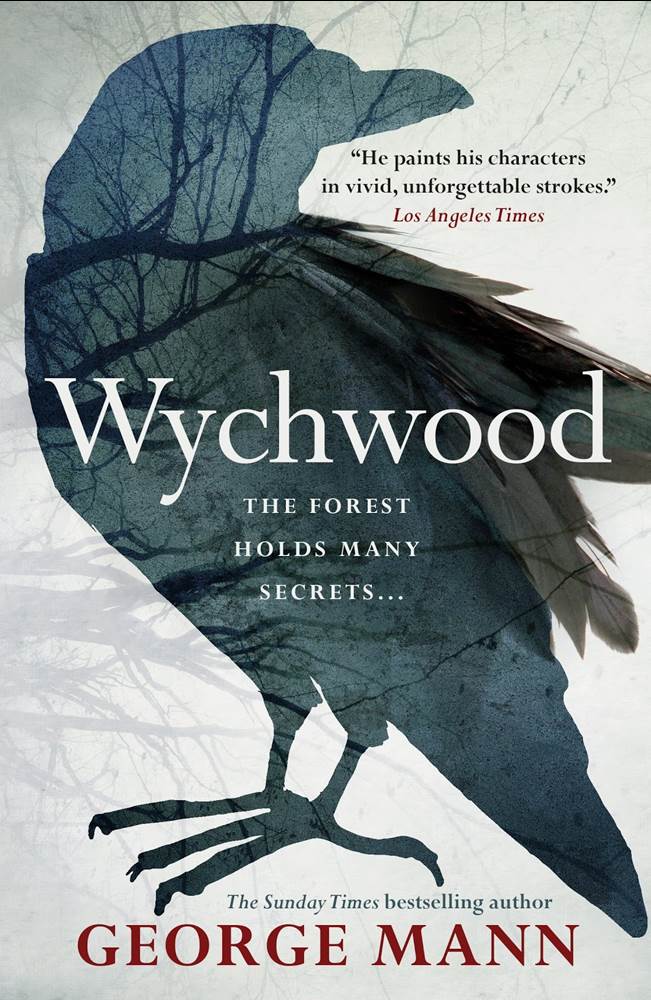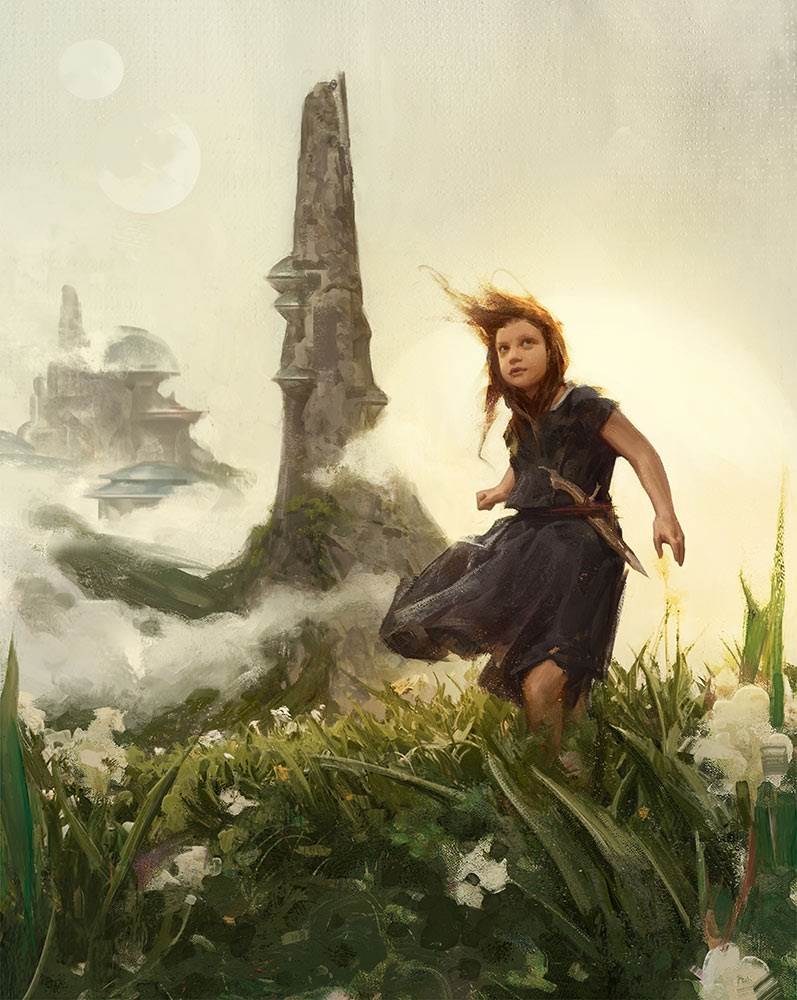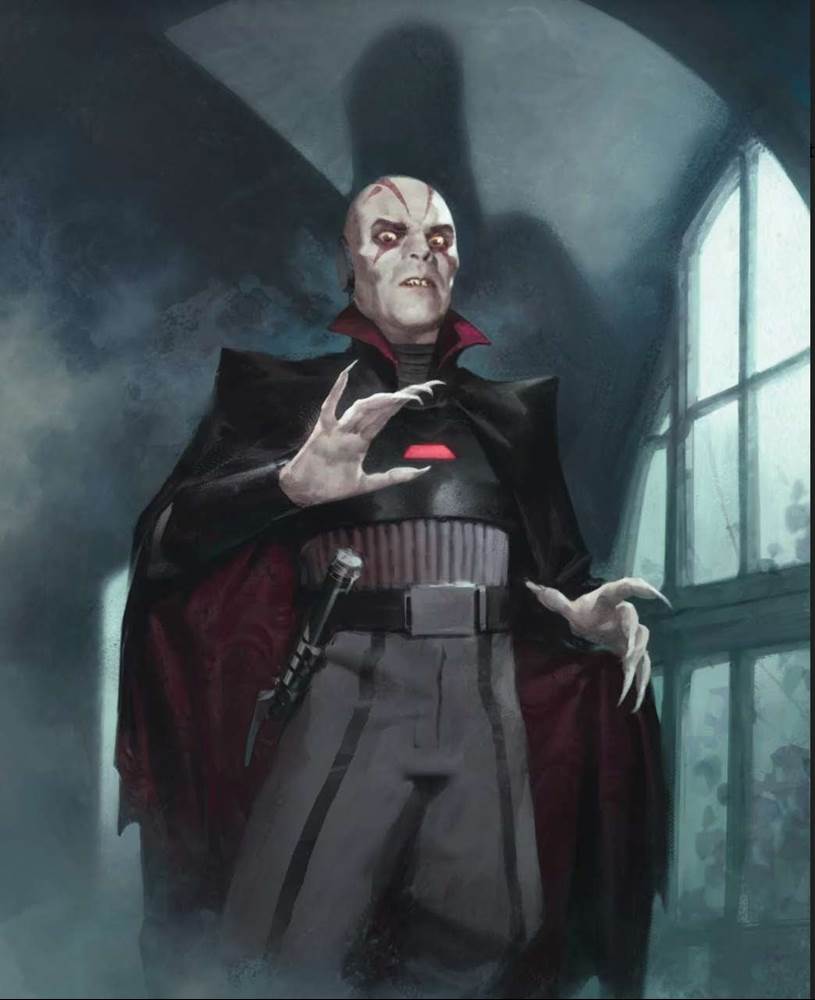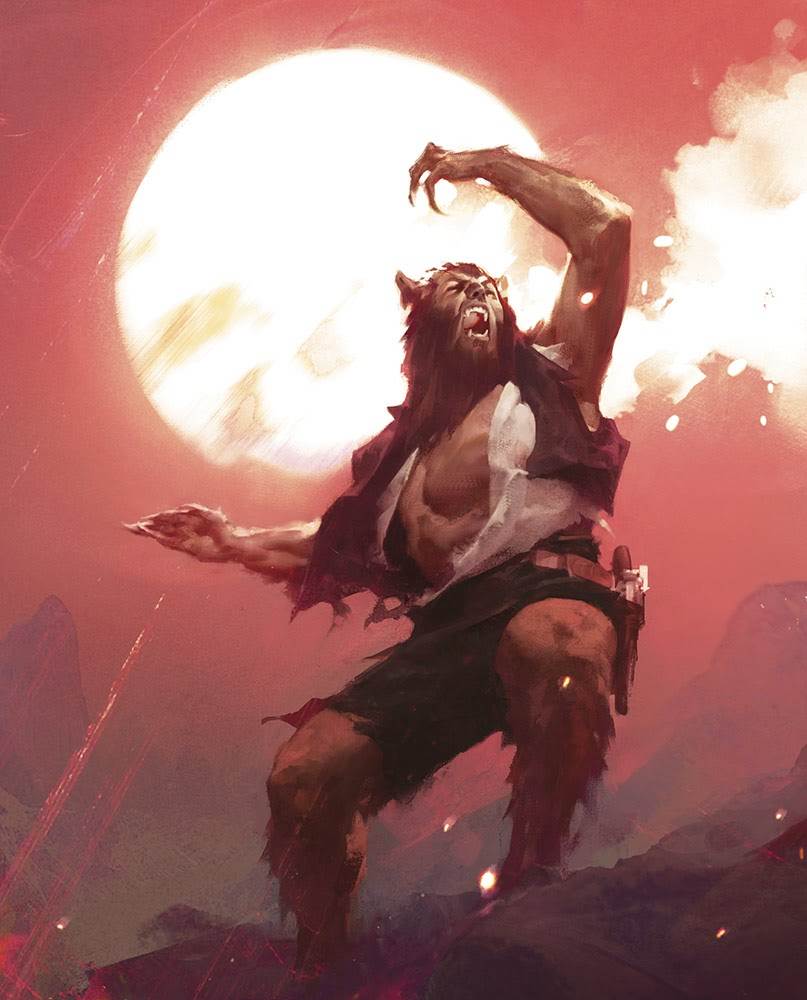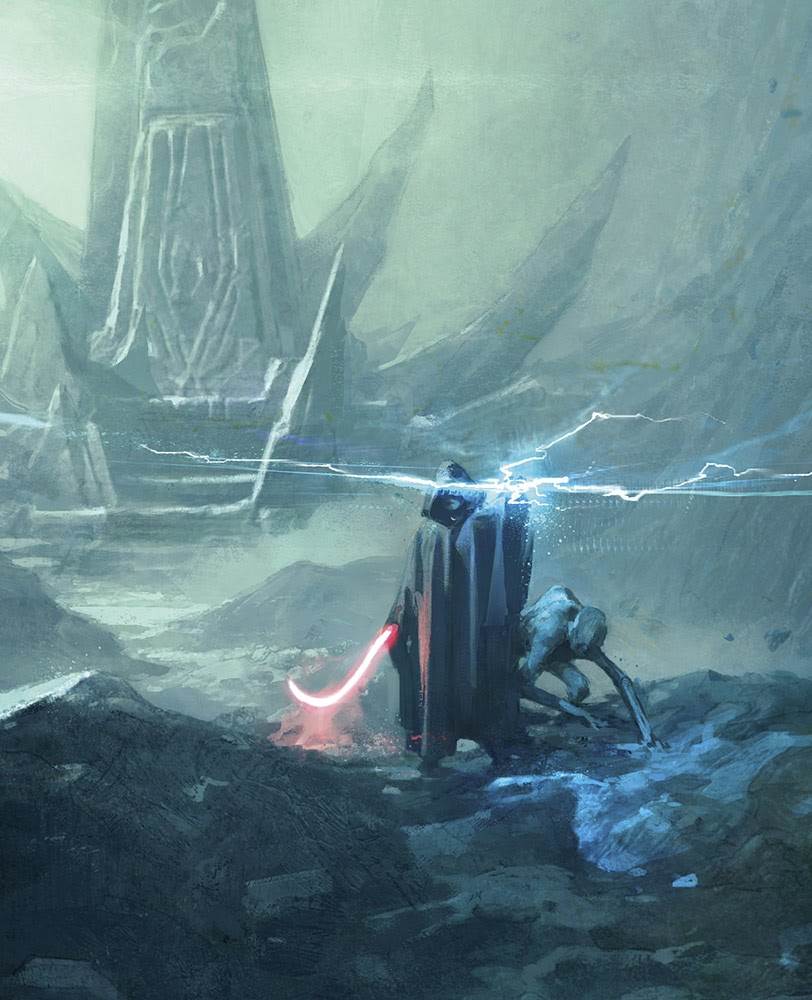Over the past decade and a half, British author George Mann has made a name for himself as an editor and writer of science fiction and fantasy. He’s contributed works to the worlds of Doctor Who, Warhammer, Dark Souls, and Sherlock Holmes, and has created his own franchises with the original novels and series Newbury & Hobbes, Ghosts of Manhattan, and Wychwood. His latest book is entitled Star Wars: Dark Legends, which serves as a follow-up to last year’s Star Wars: Myths & Fables as a collection of in-universe short stories inspired by over four decades’ worth of Star Wars mythology.
I had the pleasure of speaking with George Mann over Zoom to discuss his history as a Star Wars fan, his prolific writing career, and what it was like contributing to the ever-expanding storytelling tapestry that is Star Wars.
Mike Celestino, Laughing Place: What was your relationship with Star Wars growing up?
George Mann: Oh wow, big question. I think like most people my age, the Original Trilogy had a huge impact on me. The first one that I saw at the cinemas was [The] Empire Strikes Back, and I was quite young. It’s one of my earliest memories, actually, going to see Empire Strikes Back with my grandfather– he used to take me to see a lot of movies in those days– and him being very grumpy with me needing the toilet during the film, because he was enjoying it so much, too. [laughs] And I think the spectacle of that, as a young child, seeing the starships and [Darth] Vader and the lightsabers, the droids, everything. It just stuck with me. Before long, I was collecting all the Kenner action figures, I was collecting the sticker books, babbling on constantly about Star Wars. My dad kind of got into it, too, so it was a huge part of my psyche of pop culture, I suppose.
And then as an adult, [I’ve] obviously continued loving the films and the franchise, reading the original [Expanded Universe] novels. I became a bookseller, and working in a bookstore I had ready access to all the books as they were coming out, so [I was] voraciously reading those. Then every movie that came out since I’ve been to the cinema to see. And now I have my own kids, and my 16-year-old in particular is a big Star Wars fan and we’ve enjoyed watching all the TV shows together– recently The Clone Wars coming back and The Mandalorian. And he’s played a huge part for me in terms of being the guy I bounce my story ideas off, as well, for Myths & Fables and Dark Legends. So it’s come a bit full-circle really, and now my son’s as involved as I was when I was a kid.
LP: That’s great. I’m curious if you think the experience of growing up as a Star Wars fan in the United Kingdom was different from growing up as a Star Wars fan in the United States, based on your perspective.
Mann: I don’t think there is much anymore. I think there might have been– in fact, I’m sure there was, back in the day. Star Wars was one of the first big blockbusters that had that merchandise around it as well, that created a big ripple, and created the idea of merchandise associated to movies. And I think that played out a lot bigger in the States than over here. As I say, I was very young during the first part of the Original Trilogy, so I don’t really recall it, but looking back and seeing pictures of movie theaters in the States where people were queueing up dressed as characters from the movie– I don’t think we had that to the same extent over here until later. I think probably by the time you’re on Return of the Jedi, we were starting to get there, but even then we didn’t really have comic-cons and that sort of fan culture over here until later. Whereas now, we’ve learned a lot from the States in that respect.
We’re influenced heavily by pop culture that comes over from America in the U.K., and we now have our own comic-cons. They’re not on the same scale as, say, San Diego or New York Comic-Con, but we do our best. We definitely have more of a cosplay culture or more of a community sense of fandom. I think over here in those days, it was more Doctor Who and that sort of British-based television drama rather than Star Wars, whereas now Star Wars has permeated everything. As a British person, it was upsetting to not get The Mandalorian at the same time as America, because we love Star Wars as much as you guys, and we wanted it too. [laughs] Obviously that was an infrastructure issue with Disney+ rather than anyone saying, ‘British people can’t have Mandalorian,’ but I think it goes to show how much we’re ready and willing and want to consume in the same way that you guys do now.
LP: I can’t imagine how upset I would have been if I didn’t have access to The Mandalorian on the day it premiered. It must have been very difficult to avoid spoilers, with people talking about it all over the place.
Mann: Yeah, it was hard. I was lucky enough to visit the States in December to do a Star Wars event with a couple of other Star Wars writers, one of whom had Disney+ on his iPad and said, ‘Come and sit in my room and watch what we’ve got so far of The Mandalorian,’ so I did get to see it a little bit earlier. But yeah, I think that just goes to show how much it’s part of our culture as well, really.
LP: Let’s talk about your writing career. How did you get started in that field?
Mann: I started with original fiction. I was about 18 years old when I really started seriously trying to write, and I’d just got my first computer– a 486 PC. I’d only recently moved out of home and I was in this little rented house with this computer I rented. And I’d been excited to get it home and set it all up– and these were the days before everyone had internet access. I switched it on and realized I didn’t really have anything to do. [laughs] There were no games, so I thought, ‘Oh, I’ll write something.’ And I’d always written stories as a kid, and I remembered how much I enjoyed writing. That turned into me starting to write stories again properly. Fast forward a few years, and I was trying to write a big science-fiction space opera novel, because I was reading a lot of that stuff at the time. [I was] a big fan of things like Peter F. Hamilton and Alastair Reynolds and authors like that.
And I thought, ‘Alright, that’s what I want to do, and also that’s commercially viable at the moment.’ As I say, I was a bookseller as well, so I could see what people were buying. And inevitably I’d sit and start writing and I’d get to about chapter seven, and the story would just collapse all around me because I was very inexperienced. I was trying to write something massive and I hadn’t planned it properly. And I kept doing the same thing, kept going through this cycle of getting about six or seven chapters into the book and it would collapse. I got talking to a friend of mine who also worked at a bookseller, and he reminded me, ‘Stop worrying about writing something to sell. Just write something for yourself. Remind yourself why you love writing stories. So I did.
I thought, ‘That’s a great bit of advice,’ and I went and started writing what I thought was going to be a short story about some characters I made up called Newbury and Hobbes– they were Victorian supernatural detectives. I threw in all my favorite influences: Hammer horror and Sherlock Holmes and that kind of stuff. And it worked. Suddenly I was past the block of chapter seven and sent that to my friend Michael and said, ‘Look at this! It’s worked! I’m writing! Thank you. I’m just doing it for me, and that’s why it’s flowing.’ Little did I know that he then sent that to a friend he had in a publishing house on my behalf, because he read it and enjoyed it. And the next thing I knew was the publisher got in touch and said, ‘If you finish the book, we’ll buy it.’ It went from there, really. I [was] over the moon, nearly fell off my chair. [I] finished the book, and that was my first published novel.
[I’ve] gone on to write a lot more since– probably about twenty original novels now across a bunch of different series. And that’s kind of how I also got into writing Star Wars, in the sense that I write comic books as well, and I started going to San Diego Comic-Con with a friend of mine, Cavan Scott, who’s also a big Star Wars writer these days. And just socially [I] got talking to Michael Siglain, who’s Creative Director at Lucasfilm Publishing. We were just having a drink and got chatting and discovered a mutual love of horror movies– especially Hammer horror and the classics from the 70s– and left it at that. At no point was I saying to Mike, ‘I want to write Star Wars,’ although inside I was going, ‘I want to write Star Wars!’ [laughs] But it was a social occasion, and it wouldn’t have been appropriate of me to do that.
But we had a great time and followed each other on Twitter, and that was that until I then went to New York Comic-Con later that same year and ended up at a party with Mike. He pulled me to one side and said, ‘I bought one of your books. You were tweeting about it. It was a supernatural mystery story.’ He said, ‘I bought it and read it and it had all this mythology in it. Is that real mythology?’ And I said, ‘No no, it was all fictional. I kind of crafted this fake Saxon mythology for the novel.’ And he said, ‘Would you be interested in doing some of that for Star Wars?’ At that point, of course, I nearly grabbed him and hugged him. [laughs] And that’s how Myths & Fables came about originally. He’d read that and seen that I love playing with folklore and fictional mythology, and just thought, ‘There’s room for this in the Star Wars universe.’
LP: I want to take a half-step back from Star Wars and ask about some of your other projects: Doctor Who, Warhammer, Dark Souls, Ghosts of Manhattan, Wychwood. Can you touch on some of these?
Mann: It’s a similar story, really. Newbury & Hobbes is, like I said, a steampunk-y Victorian fantasy, and what happened is an editor from BBC Books had read one of those and wanted something with a similar tone for Doctor Who— a kind of Edwardian fantasy. He got in touch to say, ‘I think you’re a big Doctor Who fan.’ He basically read that as such a big influence on me [on] Newbury & Hobbes. So he invited me [to write a Doctor Who novel], and on the back of that I went on to do two or three more Doctor Who projects, including a run of comics, a War Doctor novel, and a bunch of audio plays as well. I had a long association with Warhammer because after working in bookshops for a long time I actually went to work at Games Workshop, who run the Warhammer brand, and spent a long time there, very happily, working on their publishing range. When I finally left to become a full-time freelance writer, I knew that world inside-out, and they asked me to participate and do some writing for them.
Dark Souls was a comic series I did for Titan based on the video game series, and Ghosts of Manhattan is an original series of mine, which is set in New York in an alternative take on the 1920s, 25 years after the big steampunk revolution. There’s occult stuff– kind of vigilantism and The Great Gatsby all mashed up. Wychwood was my other major project, which is the supernatural crime series I mentioned.
LP: The Human Abstract— is that an original story?
Mann: That comes before Newbury & Hobbes, in fact. That was a little science-fiction novella that I wrote back in 2002 [or] 2003, and it was published by a small press over here. That was my first real taste of publishing, and it was because I’d written that that I then thought, ‘Right, I’m now going to go do the big science-fiction novel.’ It’s very early work, but I’m still pretty proud of it, I suppose.
LP: So once you and Lucasfilm decided on the concept for Star Wars: Myths & Fables, how did you go about developing that idea into individual stories?
Mann: When Mike [Siglain] came to me, he had that idea of folklore and legends for Star Wars, and when we talked more, we got into the meat of it and realized that we wanted it to have the tone of Grimm’s Fairy Tales— so not to shy away from the cautionary tales, the slightly darker elements. When you go back to those Grimm’s Fairy Tales, some of them are quite bleak. Hansel and Gretel– they’re about to get cooked in an oven and they cook the witch instead. They’re not lighthearted stories, and we thought, ‘Let’s do that. Let’s go back to the origin of those things.’ So I spent quite a long time rereading Grimm’s Fairy Tales, rereading Aesop’s Fables, and other similar stories from history, and drawing inspiration from them. [I] then went back to Mike and the guys at Lucasfilm Publishing with a whole load of ideas– about twenty ideas for stories.
I was lucky enough to be traveling around that time and to be able to call in at the Lucasfilm offices [in] San Francisco and sit down with some of the editors and some of the guys from [the Lucasfilm] Story Group and talk through all of the stories, which helped shape them a little bit further. And we decided which ones we wanted to pursue to give us a good spread for Myths & Fables. Thematically, as you know, Myths & Fables [isn’t] as narrow as, say, Dark Legends, which [is made up of] all horror stories. The idea with Myths & Fables was to cover a wide range of the Star Wars universe and a wide range of story types, so we purposefully tried to pick a spread of stories. Then I went away and developed those into longer outlines, which went back and forth a little bit until we were all happy with them. And then I wrote them into stories.
That’s how the process worked. [I] had great input from Lucasfilm at every stage. They were so accommodating in what they allowed me to get away with, as well. [laughs] That was something I couldn’t believe. And I think some of that’s because they are in-universe ‘legends’– there’s a little bit of plausible deniability in terms of continuity. The ‘canon’ element of them is that these are the stories that are told within the Star Wars universe. The way I try and look at them is there’s probably a root of fact in the [stories], but over the years they’ve been told and interpreted and told again, and embellished as they’ve gone [along], so it’s for the reader to work out what really happened. And in some cases that’s a bit more obvious, perhaps, than in others. But that was definitely the approach we wanted to take with them.
LP: I want to ask about the Star Wars: Galaxy’s Edge connection in Star Wars: Myths & Fables and in Star Wars: Dark Legends. There are several stories set on Batuu and also you’ve got the Galaxy’s Edge-exclusive edition of Myths & Fables coming out with additional stories. I’m curious if you’ve had a chance to visit the lands at Disney Parks.
Mann: I have now, yes. We knew from the [beginning] we were going to a special edition– a Batuu in-universe edition, and they were hoping to put some extra stories in it. So when we went through those stories, we knew we wanted nine or ten in the first book and then another six in the special edition. Of the new ones, there [are] two set on Batuu, as well [joining the] two in the original volume. I was given access to all the work the Imagineering team had done on Galaxy’s Edge and the world of Batuu– the story concepts and the details behind it. It’s remarkable the level of detail that they went into planning that stuff. The PDF was over a hundred pages at that point, and that was before it had opened. It was amazing to get to see that, and to feel like I was then able to contribute something to it as well.
One of the lovely things they do is, myself and two or three other authors who have written Batuu books, they call us ‘Batuu historians,’ in-world. We’re able to help build that mythology. We concocted those extra four stories for Batuu, and as a consequence of all of that, it was December last year when they were just opening the Rise of the Resistance ride at Disney World in Florida, and they invited me over for the opening, which was [an] amazing experience. I got to go and visit this place that I’d read so much about, that I’d written about. To me, [it was great to see] characters like Dok-Ondar– I was already working on that story [for] Dark Legends at the time. I got to go and make Darth Caldoth’s lightsaber in Savi’s Workshop, and do the rides as well with the press. It was just an amazing time, and very very inspirational.
When we came back to doing Dark Legends and writing the Dok-Ondar story, at that point… even if they hadn’t asked me to do another story [on] Batuu, I would've wanted to, because I had been there absorbing it all. I loved it, and I’m desperate to go back, as well.
LP: That brings us to Star Wars: Dark Legends. Can you tell me about how the idea for the follow-up book to Myths & Fables came about, and what sets it apart from that first book?
Mann: The truth is we never really stopped. During the course of all those meetings where we were talking about the different stories that we wanted to put in Myths & Fables, there were a few darker ones– a couple of them that have made it across to Dark Legends. At the time, as I say, we wanted a spread. When I was over in San Francisco, Mike said half-jokingly, ‘We’ll save those for the Halloween book.’ So later on, I kind of nudge-nudge Mike: ‘Were you joking about that Halloween book?’ And he said, ‘Oh no no, we’re going to do it.’ And that Halloween book became Dark Legends. We talked more about that, and it really was an opportunity to play to our passions– a shared passion of those classic horror stories and ghost stories. And again, we wanted a good spread throughout the history of the Star Wars universe.
Horror tropes seem to fit so well with Star Wars. That’s the beauty of it. It’s all there, with the Sith and the Dark Side, the Nightsisters. It’s all there and up for grabs. We talked about the different archetypes: a vampire-like story, which became ‘The Orphanage,’ we wanted a werewolf-type story, which is ‘Blood Moon.’ I said, ‘I want to do a Jekyll and Hyde story,’ and a few others. We wanted a Darth Vader ghost story. What I try and do is delve into that and root it in Star Wars. With the Vader one, for example, I knew I wanted to do a psychological ghost story rather than a monster story with Vader– do something a little less obvious. I started thinking about, ‘What is the impact of Vader?’ Not on the people he kills, but on the people he doesn’t kill. When they’re all sat around in the boardroom and he chokes someone to death and someone else has to step up and take that person’s place, what’s everyone thinking? How does it affect and impact them?
It all seems very casual in the films, but obviously they’re all terrified. And that doesn’t stop when he walks out of the room. They’re left with the body. It’s, ‘It could be me next.’ So I started thinking about how a person might unravel in those circumstances. And that’s where we got that story from, ‘The Predecessor,’ that idea of the ghost is actually just trying to warn him that he’s going to get choked to death soon, as well, if he doesn’t stop. And it becomes a self-fulfilling prophecy. But what really clicked for the tone of the book was, we were bouncing ideas back and forth by email and I’d been watching [Star Wars] Rebels with my son. There was a particular shot of the Grand Inquisitor in one of the early episodes– it was a close-up on his face and he looked at the camera and smiled and showed his pointed teeth, and I just went, ‘Oh, he’s Nosferatu, isn’t he?’ And then I sat back and went, ‘Oh my goodness.’ So I emailed Mike: ‘Grand Inquisitor is Nosferatu,’ and he emailed me straight back in capitals going, ‘DO IT. DO IT.’ So that was the first story I wrote, and it set the tone for how the book would shape up.
LP: The final story in Dark Legends takes place on the planet Exegol and deals with Sith experiments in immortality. What was it like getting to delve into that part of the Star Wars mythology?
Mann: It was incredible. It was the last story I had written, and when I put the original ideas in I had no concept of Exegol. The guys [at Lucasfilm] came back to me and said, ‘We want these stories, and we also want you to do an extra story set on Exegol to tie in with The Rise of Skywalker, but we can’t tell you anything about it yet, so put that to one side, write the others, and then we’ll come back to it.’ So it was months later, and me and Cavan Scott were having a get-together in advance of Christmas, and I had a phone call with Pablo [Hidalgo] from Story Group to tell me about Exegol, and what the Emperor had been trying to do, so that I could write the story. And I had to stop him and say, ‘Please only tell me the spoilers for this little bit. Just tell me enough that I can write the story, but don’t tell me what happens to Rey. [laughs] I don’t want to know the rest. I don’t want the film spoiled. And he just told me the bit that I needed to know.
So I was still about to go into Rise of Skywalker and enjoy the film as a fan, which was really important to me. What I didn’t really get a sense of was the plot that Palpatine was carrying out. It was more about his intention, in terms of what Exegol was: this ancient Sith planet. He was trying to live forever and find a means by which he could transfer his consciousness to a vessel that could successfully leave the planet, but at the moment he’s confined there because it keeps going wrong. The steer I got from them was, ‘We want a story about [how] he’s not the first person to try this.’ It wasn’t an original idea to him; Sith and immortality are intertwined. So I started to think about the moral that I wanted to get across, and it was, ‘Be careful: you might get what you wish for.’ I thought that suited this scenario really well, so that’s why I went down that route.
[It’s] some years before [The Rise of Skywalker]; we don’t specify when. This other Sith Lord journeys to Exegol to try and find the means by which to live forever, and I don’t want to spoil the end of the story for people, but I also wanted to get an Igor sort of character in there as well, so that’s why you’ve got the creature stalking in the ruins. But the thing that most surprises me about that story is they let me get away with a sickle-shaped lightsaber.
LP: I would ask if you’re planning a third volume in this series, but I would think that if you are, that’s probably not something you’d be able to tell me.
Mann: I’m afraid not. I can’t talk about what’s coming or what’s not.
LP: I kind of figured that, but I’ll just say that I hope we see a third volume in this series, because Star Wars works in trilogies, of course, so I’ll cross my fingers that we get that eventually. Thank you for chatting with me today!
Mann: You’re very welcome. Thank you.
Star Wars: Myths & Fables and Star Wars: Dark Legends are available now wherever books are sold.


